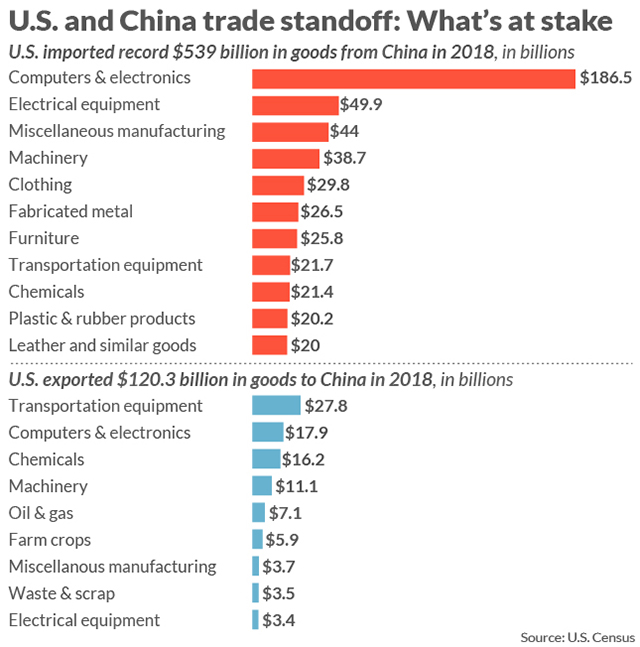
The change in quantity supplied of red wine is a result of a change in market price. Moving from point A to B or C is a movement along the supply curve. Only the market price for red wine changed, not the actual supply curve. Variation in the prices of other goods and services that sellers might produce is another significant factor. Prospectors, for example, will search for those precious metals for which the surplus of benefits over costs is greatest. When the price of silver rises, many will stop looking for gold and start looking for silver.
Businesses attempt to achieve equilibrium quantity and optimal pricing by placing it at just the right point in the supply/demand intersection — a tricky task to be sure, and a constantly moving target. “Within the next 25 years, it will become apparent to politicians that we can’t export water. We have about five times as much water as China, India and Pakistan.
Oil Futures Investing: A Comprehensive Guide to Maximizing … – NNN NEWS NIGERIA
Oil Futures Investing: A Comprehensive Guide to Maximizing ….
Posted: Mon, 07 Aug 2023 13:29:17 GMT [source]
The market-clearing price is one at which supply and demand are balanced. Technology is seen as more efficient, therefore allowing producers to increase their output and cut labour costs. An increase in the level of technology or capital machinery used within a business means that the quantity supplied will increase. However, if the quality of machinery is outdated, output levels will be low and therefore, quantity supplied will also be limited. If there is a large number of businesses and sellers within a market, then the level of output and supply will increase. The expectations of businesses regarding the price of goods will affect how much they supply.
What is Supply in Economics?
If the number of producers producing a commodity increases, its supply will increase. In case producers expect an increase in the price, they will withdraw goods from the market. If price is expected to fall in future, supply will naturally increase. When gasoline consumption plunged with the onset of the COVID-19 pandemic in 2020, prices quickly followed suit because the industry ran out of storage space. The price decline, in turn, served as a powerful signal to suppliers to curb gasoline production. Conversely, crude oil prices in 2022 provided producers with additional incentive to boost output.
Thus the law of supply will say that producers offer more products for sale when its price increases. The most important factor determining the supply of a commodity is its price. As a general rule, price of a commodity 7 factors that affect supply and its supply are directly related. It means, as price increases, the quantity supplied of the given commodity also rises and vice-versa. It happens because at higher prices, there are greater chances of making profit.
Price of related goods or services
On the contrary, floods, droughts, or earthquakes and other natural calamities are bound, to affect production adversely. This is one set of conditions which brings about a change in the supply. So what if in the spring, temperatures were well below average, with some nights dropping below freezing? This is shown by an inward shift of the supply curve, represented by S-double-prime on the chart. Commodity markets function in a complex atmosphere that includes the economic principles of supply and demand but also murkier layers of geopolitics. Existence of internal peace and stability will increase the production and supply of a good.
- Successfully securing financing may help a company boost demand and build a stronger supply chain.
- For the period mentioned it is obvious that if all things remain equal, the quantity produced and supplied to a market would remain the same.
- In addition, employee misbehavior and many more undesirable and devastating things can happen.
- As stated in accordance with the law of supply, the supply of a certain good will increase proportionately to an increase in price.
- Supply and demand has a big impact on the competitiveness of a company.
- Alternatives are usually more profitable, hence their heavy influence on suppliers’ decisions.
Each producer has his or her own supply curve for a given product, which can vary from one producer to another. As a result, demand curves slope downward from left to right, as in the chart below. Changes in demand levels as a function of a product’s price relative to buyers’ income or resources are known as the income effect. The law of supply and demand combines two fundamental economic principles describing how changes in the price of a resource, commodity, or product affect its supply and demand.
What is the difference between supply and demand?
The rational producer would then have an incentive to withhold some of his products from the market at today’s lower price, so as to have more available to sell at a higher price in the future. “Production or manufacture” is the process of converting raw materials into finished goods. These finished goods are then sold in the market to meet customer’s need and requirement. Supply apart from being just a number is a very important factor in determining the pricing of goods and/ or services.

Understanding the many varied elements and the small CPG landscape that affects product demand is hugely beneficial. Fortunately, we’ve compiled a list of the top seven factors affecting demand for you. Among supply chain risk factors, it’s important to remember that the best insurance never pays off. Some of the determinants of supply are technology, the number of suppliers, expectation of suppliers, feedback from consumers, increase in tax, high wage rate, etc. Expectations about future price changes can affect how much sellers choose to offer in the current market. Suppose, for example, that a soap producer expects the future price of its product to be much higher than the current price because of the growing use of its resources.
Other factors
Point A on the curve says that during a typical year, 80 bottles of wine would be supplied with a market price of $40/bottle. Wine production depends heavily on climate for the supply of grapes, so changes in climate can affect the supply of wine. Here’s a chart showing the supply of red wine in the Paso Robles area. For example, point A shows a market price for red wine at $30 a bottle. If the price were to drop to $10 per bottle, which is marked at point B, then only 20 bottles would be supplied. And at $70/bottle, marked by point C, 140 bottles of red wine would be supplied.
Supply is the willingness and ability of producers to sell a good or service at a given price. Whereas, demand is the willingness and ability of consumers to buy a good or service at a given price. Generally, supply of a commodity increases only at higher prices as it fulfills the objective of profit maximization. However, with change in trend, some firms are willing to supply more even at those prices, which do not maximise their profits. The objective of such firms is to capture extensive markets and to enhance their status and prestige.
Law of Supply in Economics
Your computer and communications networks can fail, be corrupted or compromised. Lawsuits can shut down your business over liability claims, intellectual property disputes, unfair labor practices or unsafe working conditions (including those of your suppliers’ suppliers). In addition, employee misbehavior and many more undesirable and devastating things can happen. Advisory services provided by Carbon Collective Investment LLC (“Carbon Collective”), an SEC-registered investment adviser. Customers enjoy the cupcakes more than the donuts and start paying more for it.
Supply is the amount of an item that is available for use or purchase. The definition of supply in economics is the amount of something that a producer or seller is willing and capable to provide to buyers. The concept of supply forms part of the foundation of all economic and business activity.
Take some time in the coming days to sit down and plot a new path forward for your business. Conduct a business impact analysis to determine what threats are out there and how you can respond. Draft a gap analysis to determine where you are and where you’re going. It will give you peace of mind to know that your company is prepared for anything. On the other hand, oversupply and low demand forces businesses to contract, laying off staff and closing factories.
Table of Contents
If the price of cow meat drops, less cows will be butchered to supply cow meat according to the law of supply. This in turn, means there’ll be a smaller supply of leather as the price drops. There is direct and positive relationship between the price of the commodity and its supply. Veblen goods are named for economist and sociologist Thorstein Veblen, who developed the concept and coined the term “conspicuous consumption” to describe it. It may seem obvious that in any sale transaction the price satisfies both the buyer and the seller, matching supply with demand. The interactions between supply, demand, and price in a (more or less) free marketplace have been observed for thousands of years.
Increase in the prices of other goods makes them more profitable in comparison to the given commodity. As a result, the firm shifts its limited resources from production of the given commodity to production of other goods. For example, increase in the price of other good (say, wheat) will induce the farmer to use land for cultivation of wheat in place of the given commodity (say, rice). Supply’s counterpart is demand; it measures how many consumers will want to buy a product at various price points. The direct relationship between price and quantity supplied of a good is known as the Law of Supply and is typically represented by an upward sloping line known as the supply curve. The law of supply relates price changes for a product with the quantity supplied.
